T h e o r i g i n s o f " f o r e s t g l a s s "
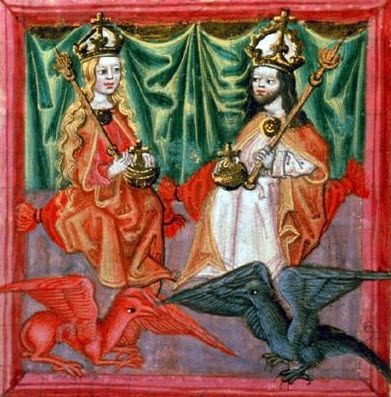
The written records about the knowledge of glass-making in the Czech lands are dated back to the 12th century AD.
The oldest glass factories have been documented in the Bohemia since the end of 13th century.
There was an extraordinary blossoming of this production in this period. Those factories exploited local rich forests for the production.
" Production in the forest " = " Forest glass "
This is the age of King Charles IV., the second king of Bohemia from the House of Luxembourg, and the first king of Bohemia to also become Holy Roman Emperor.
Charles IV. and his wife, Blanche of Valois (on the picture)
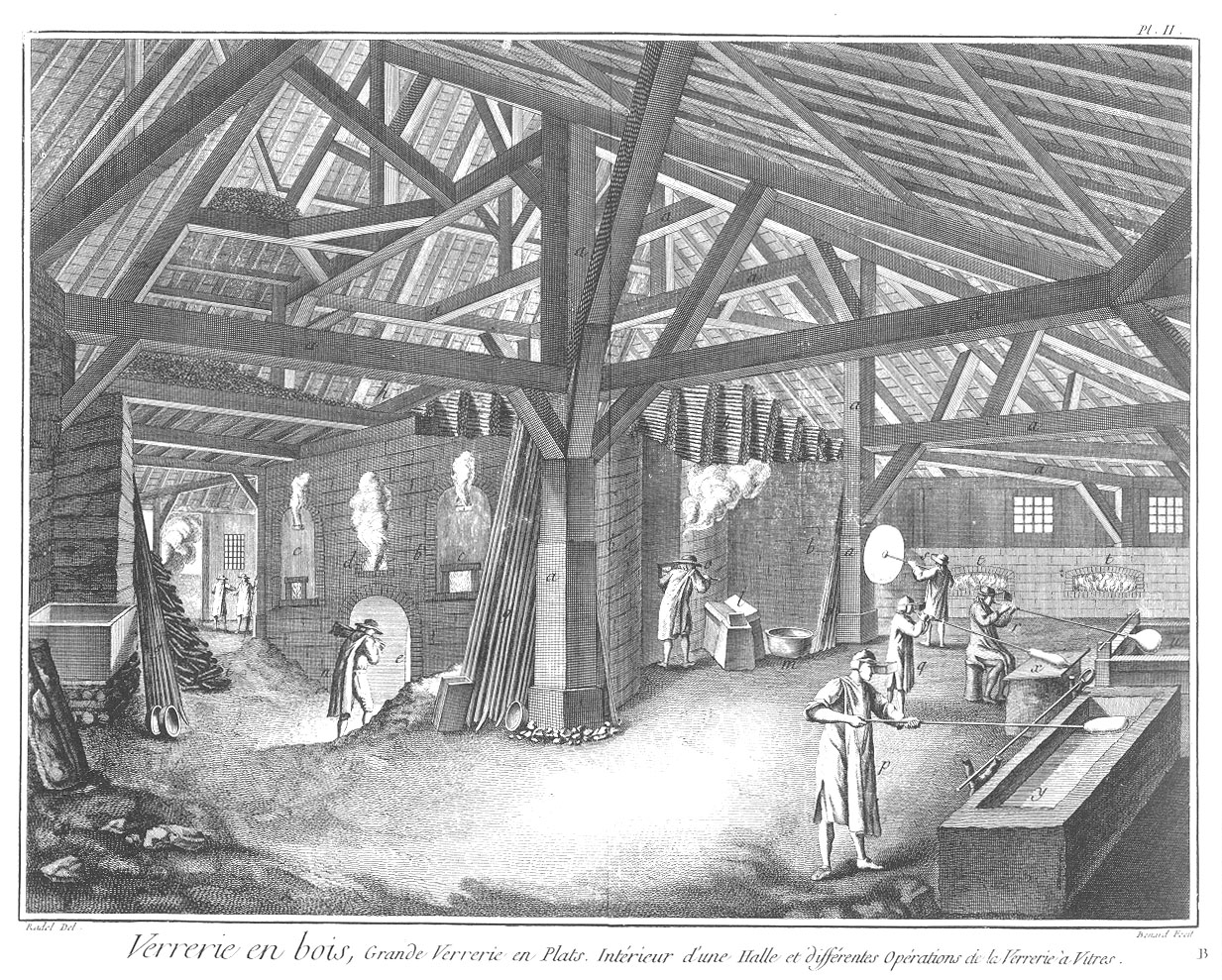
Forest glass is characterized by a green color and produced mostly with bubbles and impurities in the molten glass, which was caused due to lack of cleaning material.
Archaeologically, numerous medieval glass-houses have been found in western and central Europe, particularly in the mountains of Germany.
Geographical conditions for forest glassworks were mainly in Lorraine (France), Hesse (Germany), Thuringia (Germany) and in the Czech forest (Czech republic).
13.-14. Century - Production development of DRINKING GLASS
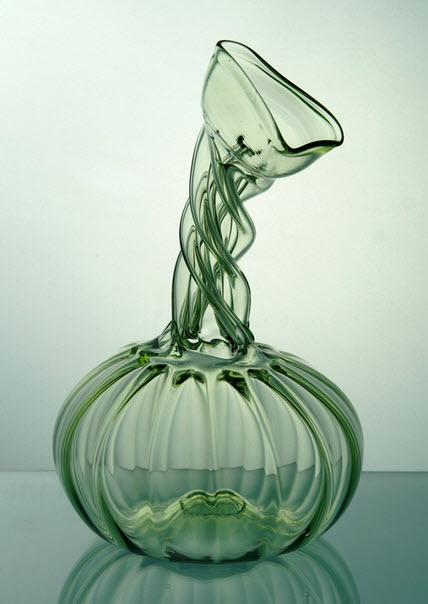
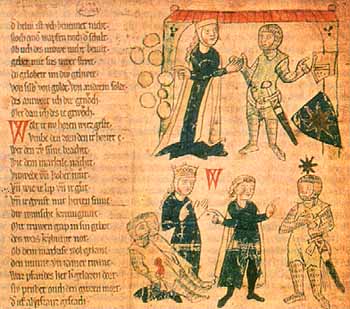
Kuttrolf Glass
German flask with the neck divided into two or more tubes.
Epic poem Willehalm (1220): Kuttrolf mentioned as a "Gutteral for wine"
(1409) Kuttrolf mass production in Spessart (Germany)
2nd half of 15. Century - development of plastic fusions
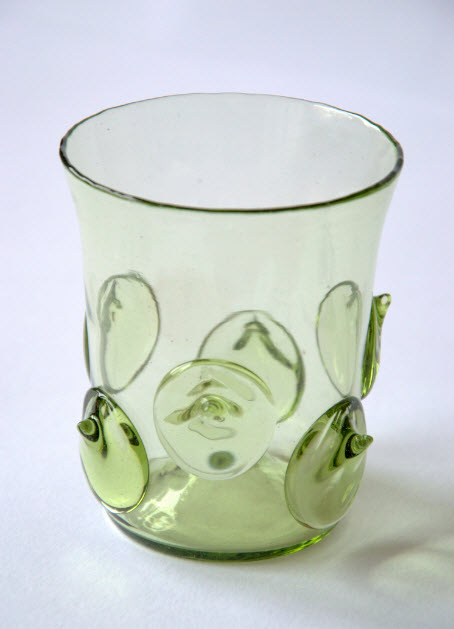
(German, “cabbage stalk”) A type of beaker with a cup-shaped mouth and a
cylindrical or barrelshaped body decorated with prunts, made in Germany
between the 15th and 17th centuries. It was the forerunner of the Römer.
Krautstrunk beaker
16. Century - shape transformation to Rummer (Römer)
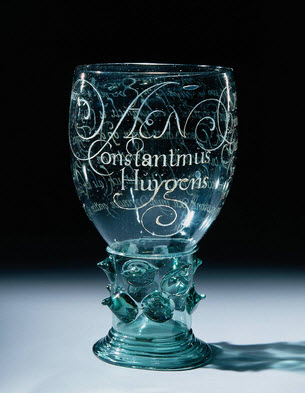
Rummers, Römers, or Roemers, were large drinking-glasses studded with prunts
to ensure a safe grip, popular in the Rhineland and theNetherlands from the 15th
through the 17th century.
(Green glass is especially suitable for serving white Riesling wine.)
2nd hald of 16 Century - Renaissance elements
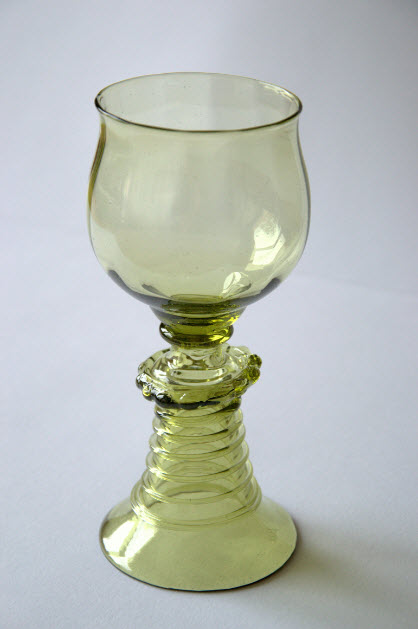
Forest glass competes with expensive Venice glass.
Expansion to Holland, France, Scandinavia till 18. Century
STANGENGLAS (rod stickers)
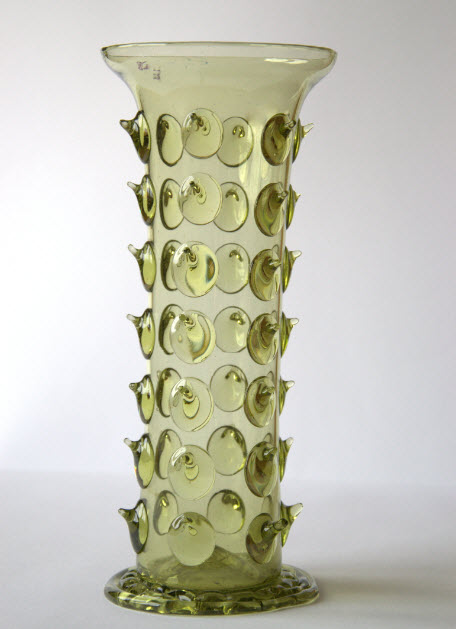
Stangenglas - One of the most favorite glass shape of 16. Century.
Passglas (ring decoration)
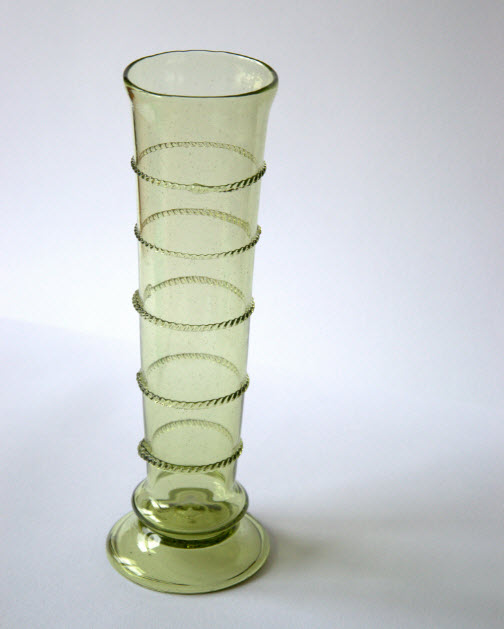
Passglass - One of tThe most favorite glass shape of 16. Century.
This is a passglas (measuring glass), a type of drinking glass for communal
use at state or guild functions, banquets, weddings and other festivities.
The drinker had to consume an exact measure before being allowed
to pass the glass on.
Brandwurm (spiral decoration)
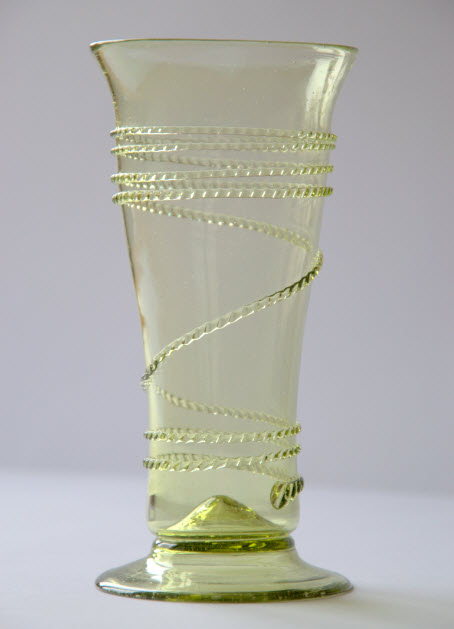
(German, “tapeworm glass”) A variety of Stangenglas decorated with a notched trail wound spirally, like a worm, around the wall. Glasses of this type were made in Germany between the 15th and 17th centuries.
After (1630) - Rummer decorated by typical "raspberry" stickers.
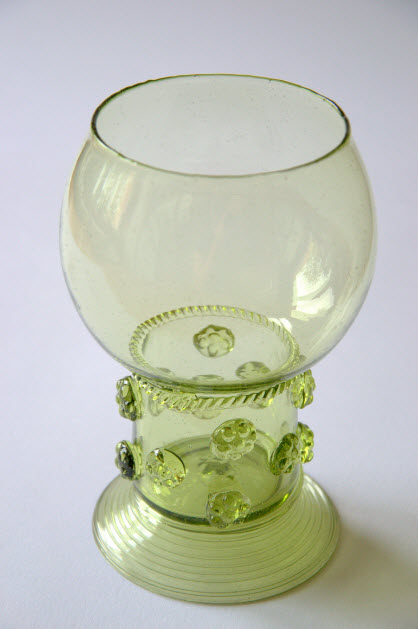
17. Century - curious German glass " Daumenglas "
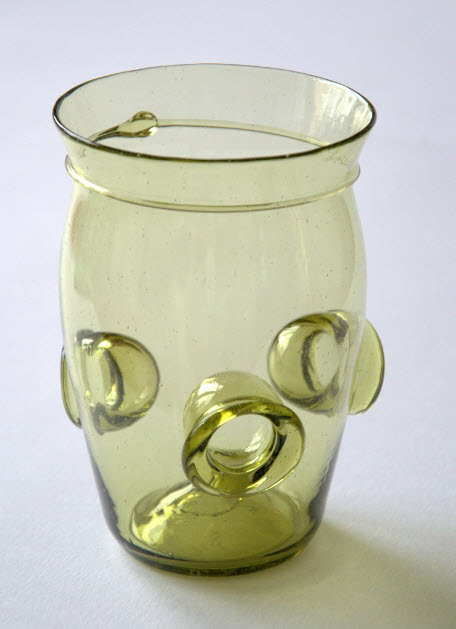
(German, “thumb glass”) A large cylindrical or barrel-shaped forest glass beaker
with circular indentations for the user’s fingers and thumbs. Daumengläser were
made in Germany and the Netherlands in the 16th and 17th centuries.
Additional information: